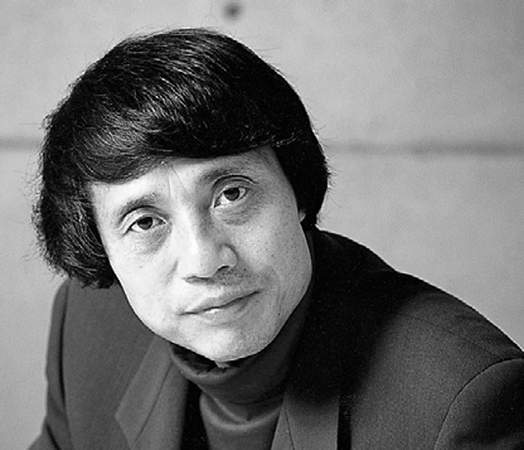Tadao Ando was born in 1941 in Osaka, Japan. He is a prolific architect and is in demand the world over. He designs buildings using his distinctive approach to architecture. His style uses simple forms, lots of exposed concrete, and the creative use of natural light. People describe his work as ‘international modernism’. A leading architectural critic said: "Ando is right in the Japanese tradition.”
1941年,安藤忠雄出生于日本大阪。他也是当今最为多产,最具影响力的世界建筑大师。他的建筑风格独具一格。他的建筑风格非常简约,再配有棱角分明的清水混凝土,以及自然光。人们将他称之为“国际现代主义”大师。著名建筑评论家认为:“安藤忠雄很好的运用了日本传统美学。”
Ando spent his childhood making wood models. He spent hours in a carpenter's shop across the street and learnt many techniques from the craftsmen. After leaving school he drifted from job to job. He was a truck driver and tried his luck as a boxer. He eventually got into architecture, even though he had no qualifications.
童年时期,他制作了许多木工模型。他会在街上的木工商店待上几个小时,从木匠手里学习技艺。毕业之后,他频繁换工作。他曾经是一名货车司机和拳击手。其后在没有资格认证的情况下成为了一名建筑师。

Ando began teaching himself the principles of designing buildings. He visited temples and shrines in Kyoto and Nara to get a feel for traditional Japanese architecture. He also travelled to Europe to sketch the magnificent buildings there. His maiden project was Tomishima House in Osaka in 1973. Twenty years later he completed his first international project, the Japanese Pavilion at Expo92 in Sevilla, Spain.
安藤忠雄开始自学建筑理论。他前往了东京和奈良,探究那里的寺院和神庙,并寻找日本传统建筑的创作灵感。他还曾前往欧洲,素描那里的伟大建筑。1973年,他的处女富岛邸问世。20年后,他完成了自己的首个国际作品,西班牙塞维利亚世界博览会的“日本政府馆”。
Ando was first recognized for his work in 1979, when he won the Annual Prize from the Architectural Institute of Japan. In 1995, he scooped the Pritzker Prize, the highest distinction in world architecture. He donated the $100,000 prize money to the orphans of the Kobe earthquake. A housing complex he designed in Kobe survived the earthquake undamaged.
1979年,安藤忠雄获得了日本建筑协会年度大奖,至此他的作品也得到了大家的认可。1995年,他荣获了建筑界最高荣誉奖,普利兹克奖。他随即向神户大地震孤儿捐赠了10万美金。在此次地震中,他在神户设计的居住区完好无损。
译文属可可英语原创,未经允许,不得转载。












